
How to Boost Psychological Capital & Beat Burnout
Thanks to Noah Jacobson for this guest post about preventing and dealing with burnout! Noah interned previously with Happy Brain Science and became fascinated with the application of positive psychology. He graduated from Grinnell College with a degree in Psychology and Neuroscience.
If You’re Heading Toward Burnout…
 Work and life move at a different speed during COVID. Whether you’re on the couch in pajama pants and a “Zoom shirt,” or practicing social distancing at the office, it’s easy to get stuck in a rut. But what should you do if you’re starting to experience burnout? Reducing burnout isn’t easy. However, using a concept called psychological capital as a roadmap, you’ll have an experienced guide, equipped with plenty of solutions to any burnout roadblocks you encounter.
Work and life move at a different speed during COVID. Whether you’re on the couch in pajama pants and a “Zoom shirt,” or practicing social distancing at the office, it’s easy to get stuck in a rut. But what should you do if you’re starting to experience burnout? Reducing burnout isn’t easy. However, using a concept called psychological capital as a roadmap, you’ll have an experienced guide, equipped with plenty of solutions to any burnout roadblocks you encounter.
First, some fast facts about burnout: It happens a lot. A 2018 survey of more than 15,000 physicians across multiple specialties found that 42% reported burnout (1). Burnout develops over time and results from a prolonged response to chronic stressors on the job (2). It consists of three parts, but you don’t have to have all three to be burned out:
1. Detachment from Work
Developing an indifferent or distant attitude towards work. This includes irritability and negative attitudes towards coworkers, a loss of purpose and motivation, and withdrawal from work (absenteeism, tardiness, etc) (3).
2. Emotional Exhaustion
Being overextended and exhausted by your work. It can include both physical and emotional reactions like fatigue, headaches, apathy, trouble sleeping, and difficulty concentrating (3).
3. Feeling Inadequate and Hopeless at Work
Having a lack of confidence in your ability to complete tasks productively. Feeling decreased satisfaction with past and present work accomplishments and like your work doesn’t matter (3, 2).
Burnout roadblocks can show up in different ways depending on the situation and individual. You may feel one or more of the symptoms of burnout while at your job. This route isn’t the same for everyone. In fact, burnout symptoms can depend on the type of work you do and the environment you work in (1, 2).
PsyCap: A Roadmap to Turn Burnout Around
 So what can you do if you’re at risk of burnout—or trying to prevent it? According to multiple studies, the concept of psychological capital (or PsyCap) is positively correlated with employee performance, job satisfaction, and well-being—and negatively correlated with various symptoms of burnout.
So what can you do if you’re at risk of burnout—or trying to prevent it? According to multiple studies, the concept of psychological capital (or PsyCap) is positively correlated with employee performance, job satisfaction, and well-being—and negatively correlated with various symptoms of burnout.
PsyCap consists of four underlying capacities that can be developed and enhanced: (self) efficacy, optimism, hope, and resilience (4). It’s important to note that these 4 capacities don’t reflect permanent, unchanging traits in this context. Instead, research shows they’re psychological states that can be intentionally boosted.
PsyCap is characterized by: “(1) having confidence (self-efficacy) to take on and put in the necessary effort to succeed at challenging tasks; (2) making a positive attribution (optimism) about succeeding now and in the future; (3) persevering toward goals and, when necessary, redirecting paths to goals (hope) in order to succeed; and (4) when beset by problems and adversity, sustaining and bouncing back and even beyond (resilience) to attain success” (4).
Think of them like detour routes you can use when you encounter a rough patch at work. Each has its own specific benefits, but they will all help get you back on track. Choose what seems best for you and your situation!
Load Up Your Inner GPS with Efficacy
Efficacy refers to your confidence in succeeding and performing challenging tasks at work (4, 5). Just like a GPS guides you on your journey, efficacy is a resource that can provide direction and remove uncertainty.
How it fuels you: A strong sense of efficacy decreases feelings of uncertainty and doubt, and is especially important for leaders and those in challenging roles (5). In studies of school principals, the principals’ efficacy (in areas such as managing relationships, displaying instructional leadership, providing support to others, etc.) predicted their perceived autonomy, another factor known to reduce burnout.
The level of principals’ efficacy also predicted how much autonomy the principals then passed on to teachers (5, 6). This finding is critical, as perceived autonomy is another factor that can buffer burnout (6). As a doctor, hospital administrator, department director, or other leader, consider how your feelings of competence and confidence may influence the interactions with the employees you supervise. Displaying poise and confidence can boost both your and their performance (6).
A few ideas to boost your efficacy (from Choose Happiness @ Work):
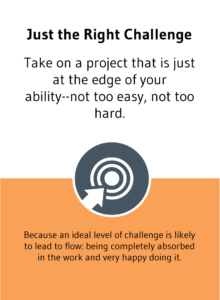
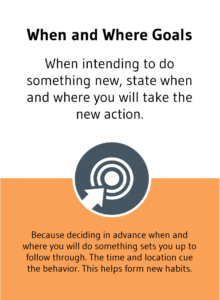
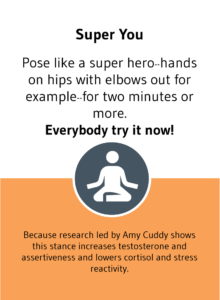
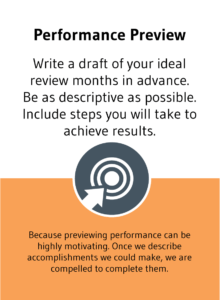
Give It Gas (Even Under Stress) with Optimism
Optimism is a generalized expectation for positive outcomes at work both in the present and the future (4, 13). Optimism can give you the power to thrive even under difficult working conditions.
How it fuels you: Optimism helps you handle stressful situations better at work. In fact, when comparing optimism levels among managers who reported lower job resources (i.e., lower peer cohesion, supervisor support, autonomy, etc), higher optimism significantly predicted higher efficacy and lower emotional exhaustion (14). Similarly, in IT workers who reported high stress in response to the Y2K crisis, those who displayed higher optimism showed less emotional exhaustion than those who had less optimism (14, 15).
Optimistic workers feel more control and influence over their work, and thus may be less likely to feel the effects of stressful situations, experience emotional exhaustion, and/or become cynical about their job goals (14, 15, 16). Staying positive even when something else is out of your control can help you continue to perform at your best.
A few ideas to boost your optimism (from Choose Happiness @ Work):
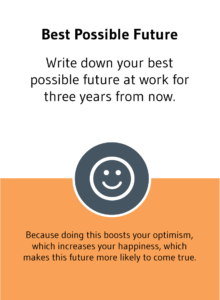
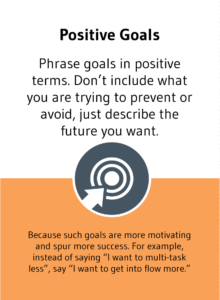
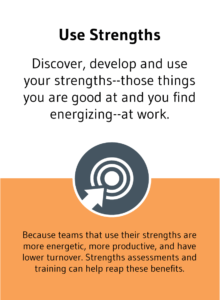
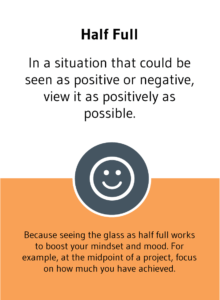
Fast Track Forward with Hope
Hope has two components: 1) goal-directed agency, which generates positive expectations and motivation, and 2) planning to meet goals, which fosters achievement of goals. Hope can help you stay centered and focused on pursuing goals at work, even when the going gets tough (10, 11).
How it fuels you: Hope is such a powerful state that it predicts reduced burnout symptoms more accurately than age, experience, or profession among emergency room professionals (12). Hope leads individuals to use more coping strategies in high stress jobs such as social work and nursing. Studies of management executives demonstrate that hope also directly contributes to solution generation and effective problem solving on open-ended problem-solving tasks (11).
More specifically, the motivational aspect of hope can help combat emotional exhaustion in a high stress medical environment, while the planning component helps with achievement-related outcomes such as formulating accurate work objectives and practical action plans (12).
A few ideas to boost your hope (from Choose Happiness @ Work):
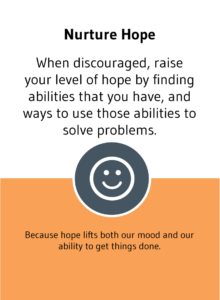
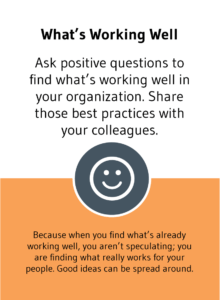
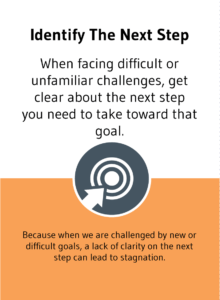
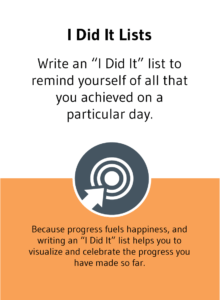
Get Back in Gear with Resilience
Resilience is a combination of protective factors (self-reliance, perseverance, hardiness, faith, support, purpose) that produce positive outcomes in the face of stress (4, 7). Becoming more resilient can keep you headed in the right direction—away from burnout.
How it fuels you: Resilience helps individuals handle the demands of their work more successfully, increasing their feelings of control (7). Studies of nurses and telephone operators, both stressful jobs with high burnout rates, show that resilience also boosts other protective factors such as feelings of personal accomplishment, hope, competence, and motivation (8, 9). Resilience thus acts as a foundation on which you can build other positive resources to reduce burnout.
A few ideas to boost your resilience (from Choose Happiness @ Work):
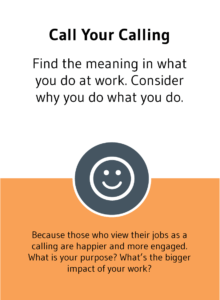
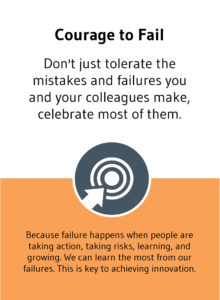
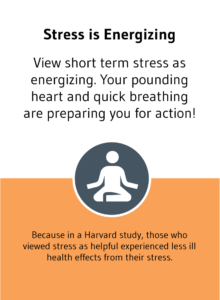
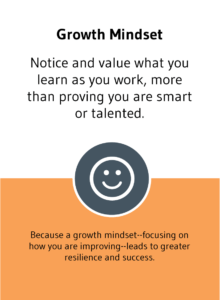
Navigate Around Burnout & Continue On
 Remember, you don’t have to always be happy, hopeful, or confident to experience less burnout. That’s unrealistic! More targeted optimism that is context-specific—also called state-based optimism—predicts reduced emotional burnout and other outcomes (such as commitment, job satisfaction, and level of stress at work) to a greater degree than more general personality- or trait-based optimism (16, 17).
Remember, you don’t have to always be happy, hopeful, or confident to experience less burnout. That’s unrealistic! More targeted optimism that is context-specific—also called state-based optimism—predicts reduced emotional burnout and other outcomes (such as commitment, job satisfaction, and level of stress at work) to a greater degree than more general personality- or trait-based optimism (16, 17).
Of course, using some (or all) of PsyCap’s four strategies can’t solve all of your problems at work—but they can make the road a little smoother.
Thank you to Noah for this post! How else have you boosted psychological capital for yourself or those you lead? What strategies have been most helpful to you for coping with burnout? We’d love to hear your experiences & suggestions! Thanks for commenting below, connecting with us through any of our social media channels, or contacting us here.
Sources About PsyCap & Burnout
1. Peckham, C. (2018, January 18). Medscape National Physician Burnout & Depression Report 2018. Retrieved from https://www.medscape.com/slideshow/2018-lifestyle-burnout-depression-6009235
2. Schaufeli, W. B., & Salanova, M. (2007). Efficacy or inefficacy, that’s the question: Burnout and work engagement, and their relationships with efficacy beliefs. Anxiety, stress, and coping, 20(2), 177- 196. https://doi.org/10.1080/10615800701217878
3. Maslach, C., & Leiter, M. P. (2016). Understanding the burnout experience: Recent research and its implications for psychiatry. World Psychiatry: Official Journal of the World Psychiatric Association (WPA), 15(2), 103-111. https://www.ncbi.nlm.nih.gov/pmc/articles/PMC4911781/
4. Luthans, F., Avolio, B. J., Avey, J. B., & Norman, S. M. (2007). Positive psychological capital: Measurement and relationship with performance and satisfaction. Personnel psychology, 60(3), 541-572. https://digitalcommons.unl.edu/cgi/viewcontent.cgi?article=1010&context=leadershipfacpub
5. Federici, R. A., & Skaalvik, E. M. (2012). Principal self-efficacy: Relations with burnout, job satisfaction and motivation to quit. Social Psychology of Education : An International Journal, 15(3), 295-320. https://link.springer.com/article/10.1007/s11218-012-9183-5
6. Federici, R. A., & Skaalvik, E. M. (2012). Teacher and principal self-efficacy: Relations with autonomy and emotional exhaustion. In S. L. Britner (Ed.), Self-efficacy in school and community settings; self-efficacy in school and community settings (pp. 125-150, Chapter ix, 217 Pages) Nova Science Publishers. https://psycnet.apa.org/record/2013-06425-007
7. McFadden, P., Mallett, J., & Leiter, M. (2018). Extending the two-process model of burnout in child protection workers: The role of resilience in mediating burnout via organizational factors of control, values, fairness, reward, workload, and community relationships. Stress and Health: Journal of the International Society for the Investigation of Stress, 34(1), 72-83. https://pubmed.ncbi.nlm.nih.gov/28544380/
8. Rushton, C. H., Batcheller, J., Schroeder, K., & Donohue, P. (2015). Burnout and resilience among nurses practicing in high-intensity settings. American Journal of Critical Care, 24(5), 412-420. https://doi.org/10.4037/ajcc2015291
9. Tian, X., Liu, C., Zou, G., Li, G., Kong, L., & Li, P. (2015). Positive resources for combating job burnout among chinese telephone operators: Resilience and psychological empowerment. Psychiatry Research, 228(3), 411-415. https://pubmed.ncbi.nlm.nih.gov/26165957/
10. Snyder, C. R., Rand, K. L., & Sigmon, D. R. (2018). Hope theory: A member of the positive psychology family. In M. W. Gallagher, & S. J. Lopez (Eds.), The oxford handbook of hope; the oxford handbook of hope (pp. 27-43, Chapter xxiii, 373 Pages) Oxford University Press.
11. Peterson, S. J., & Byron, K. (2008). Exploring the role of hope in job performance: Results from four studies. Journal of Organizational Behavior, 29(6), 785-803. https://onlinelibrary.wiley.com/doi/abs/10.1002/job.492
12. Ho, S. M. Y., & Lo, R. S. Y. (2011). Dispositional hope as a protective factor among medical emergency professionals: A preliminary investigation. Traumatology: An International Journal, 17(4), 3-9. https://psycnet.apa.org/record/2012-04677-002
13. Scheier, M. F., & Carver, C. S. (1985). Optimism, coping, and health: assessment and implications of generalized outcome expectancies. Health psychology, 4(3), 219. https://doi.org/10.1037/0278-6133.4.3.219
14. Riolli, L., & Savicki, V. (2003). Optimism and coping as moderators of the relation between work resources and burnout in information service workers.International Journal of Stress Management, 10(3), 235-252. https://psycnet.apa.org/record/2003-09917-003
15. Riolli, L., & Savicki, V. (2003a). Optimism and Coping as Moderators of the Relationship between Chronic Stress and Burnout. Psychological Reports, 92(3), 1215–1226. https://doi.org/10.2466/pr0.2003.92.3c.1215
16. Chang, E.C., Rand, K.L., & Strunk, D.R. (2000). Optimism and risk for job burnout among working college students: Stress as a mediator. Personality and Individual Differences, 29(2), 255.263. https://www.tandfonline.com/doi/abs/10.3200/JRLP.141.6.565-580
17. Kluemper, D. H., Little, L. M., & Degroot, T. (2009). State or trait: Effects of state optimism on job-related outcomes. Journal of Organizational Behavior, 30(2), 209-231.